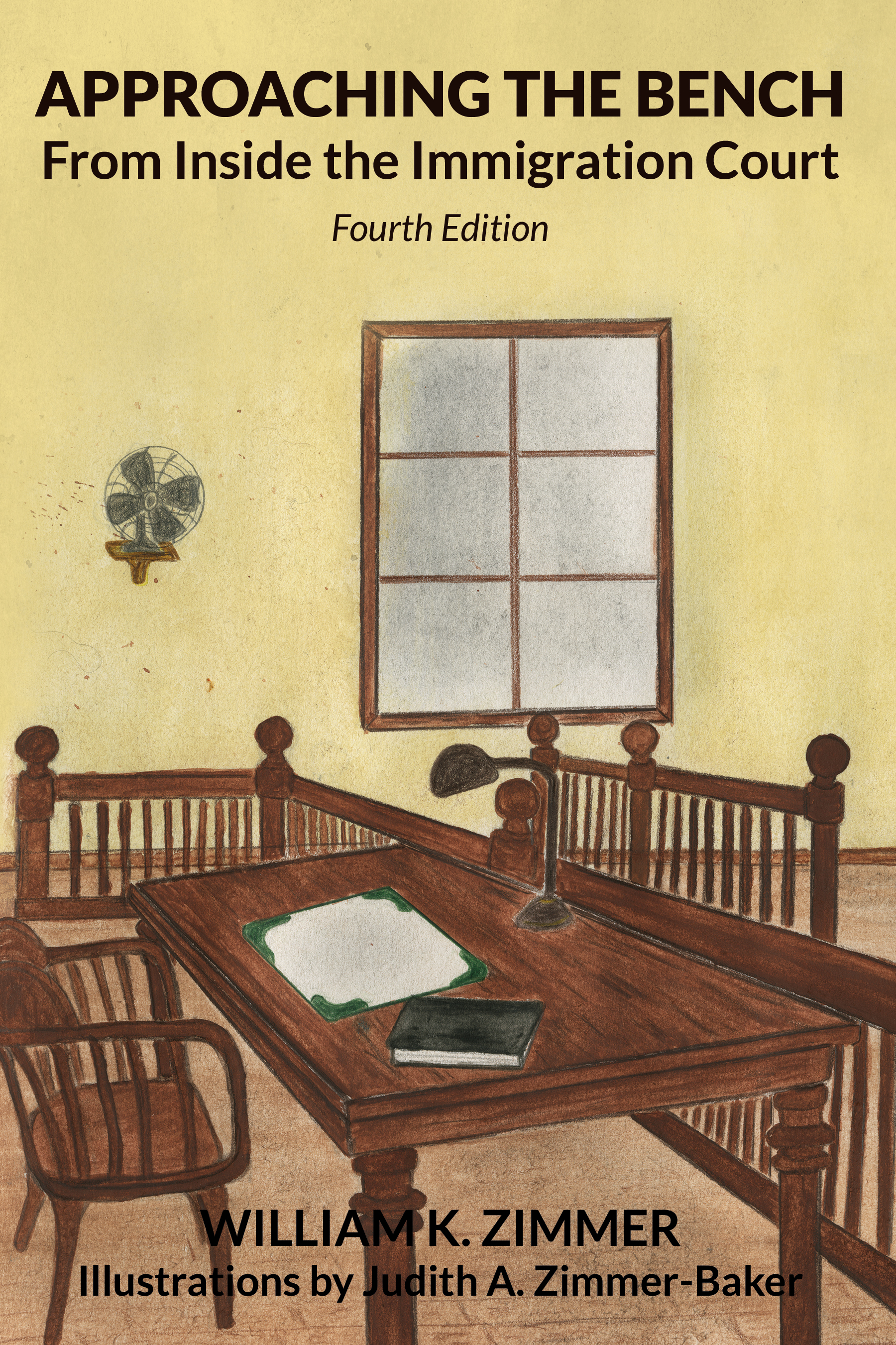Receiving of Stolen Property Under Pennsylvania Law is an Aggravated Felony

The procedural history, facts of record, holding and rationale in Kahn v. Garland (May 30, 2023) No. 21-60146 are as follows:
Case History
The Department of Homeland Security (“DHS”) charged that the Petitioner is subject to removal from the United States.
The Petitioner contested the removal charge and filed a motion to terminate removal proceedings.
An Immigration Judge denied the Petitioner’s motion to terminate.
The Petitioner appealed to the Board of Immigration Appeals (“BIA”).
The BIA upheld DHS’s removal charge and dismissed the Petitioner’s appeal.
The Petitioner filed a petition for review.
Facts
- The Petitioner is a native and citizen of Cambodia who was admitted to the United States as a refugee in 1983.
- On May 12, 1986, the former Immigration and Naturalization Service adjusted the Petitioner’s refugee status to the status of lawful permanent resident.
- In 1999, the Petitioner pleaded guilty to receiving stolen property in violation of 18 Pa. Cons. Stat. § 3925(a) in Pennsylvania state court and was sentenced to 3 to 24 months imprisonment.
- Based on the Petitioner’s conviction, the DHS, charged that he is subject to removal from the United States under section 237(a)(2)(A)(iii) of the Immigration and Nationality Act, as amended (“the Act”) as an alien who has been convicted of an aggravated felony defined in section 101(a)(43)(G) of the Act (i.e. “a theft offense (including receipt of stolen property) . . . for which the term of imprisonment [is] at least one year”).
- In his motion to terminate removal proceedings, the Petitioner asserted that his conviction did not categorically qualify as an aggravated felony.
- The Immigration Judge concluded that the Pennsylvania statute sufficiently matched the generic elements of a theft offense described in the generic federal statute (i.e. section 101(a)(43)(G) of the Act) and denied the Petitioner’s motion to terminate.
- The Petitioner appealed to the BIA, alleging error in the Immigration Judge’s application of the categorical classification method claiming that the elements of his State offense did not match all of the elements of the generic federal statute to which the State offense was compared.
- The BIA agreed with the Immigration Judge, upheld the Petitioner’s removal charge and dismissed his appeal, relying on Commonwealth v. Newton, 994 A.2d 1127, at 1132 n.7 (Pa. Super. Ct. 2010) to determine the meaning of the intent element (i.e. “mens rea”) of the statute underlying the Petitioner’s conviction.
- The Petitioner then filed a petition for review.
Held
Petition for Review DENIED
Rationale
The Petitioner asserted that:
- 18 Pa. Cons. Stat. § 3925(a) is broader than the generic theft offense (i.e. receipt of stolen property) with regard to the element of intent by allowing the State to prove that a defendant had “reason to believe the property is stolen” (an objective standard) as opposed to actually “believing it had been stolen” (a more narrow subjective standard), and, therefore, that all of the elements of his State offense do not match all of the elements of the generic federal offense which is necessary to classify his offense as an aggravated felony for receipt of stolen property; and
- the BIA erred by relying on Commonwealth v. Newton, 994 A.2d 1127 (Pa. Super. Ct. 2010) which did not accurately represent the law in effect at the time of his conviction because the BIA applied it retroactively and violated his due process rights, implicating ex post facto concerns.
The Fifth Circuit Court of Appeal reasoned as follows:
Aggravated Felony Classification
- The categorical approach which consists of comparing the elements of the state statute with the elements of the generic federal offense as defined in the Act must be applied. Moncrieffe v. Holder, 569 U.S. 184, at 190 (2013).
- “A state offense is a categorical match with a generic federal offense only if a conviction of the state offense would necessarily involve proving facts that would establish a violation of the generic federal offense.” Vetcher v. Barr, 953 F.3d 361, at 366 (5th Cir. 2020).
- In addition, a proponent of the claim that a State statute is broader than the generic federal statute to which it is being compared must establish “that the State actually prosecutes the non-generic offense.” Vazquez v. Sessions, 885 F.3d 862, at 871 (5th Cir. 2018).
- The generic federal definition of “theft offense” is construed to mean the “taking of property or an exercise of control over property without consent with the criminal intent to deprive the owner of rights and benefits of ownership, even if such deprivation is less than total or permanent.” Martinez v. Mukasey, 519 F.3d 532, at 540 (5th Cir. 2008). See also United States v. Sanchez-Rodriguez, 830 F.3d 168, at 172 (5th Cir. 2016).
- At a minimum, to satisfy the generic mens rea (i.e. legalese meaning criminal intent) requirement for a receipt of stolen property offense under the Act, the offense must require a subjective “knowledge or belief” that the property was stolen. In re Deang, 27 I. & N. Dec. 57, at 61, 63 (BIA 2017).
- The statute underlying the Petitioner’s conviction, 18 Pa. Cons. Stat. § 3925(a), provides that:
A person is guilty of theft if he intentionally receives, retains, or disposes of movable property of another knowing that it has been stolen, or believing that it has probably been stolen, unless the property is received, retained, or disposed with intent to restore it to the owner.
- The plain text of this statute requires the offender have “knowledge or belief” that the property was stolen. See, for example, Barradas Jacome v. Attorney Gen. United States, 39 F.4th 111, at 123-124 (3d Cir. 2022); In re Deang, at 63.
- The Petitioner’s argument that at the time of his conviction, Pennsylvania courts routinely applied a lower mens rea standard of “reason to believe” for receiving stolen property was recently resolved, adversely to the Petitioner’s position. Barradas Jacome v. Att’y Gen. United States 39 F.4th at 123. Specifically, the Third Circuit Court of Appeal explained that the text of § 3925(a) was amended by the Pennsylvania legislature in 1972 to remove its objective reasonable person standard. Barrados Jacome, at 123 n.9.
- In short, the Third Circuit Court of Appeal has held that Pennsylvania’s receipt of stolen property offense does not have an objective element and is “purely subjective.” Barradas Jacome, 39 F.4th at 123; De Leon-Reynoso v. Ashcroft, 293 F.3d 633, at 636 (3d Cir. 2002).
- Therefore, the Petitioner's offense under 18 Pa. Cons. Stat. § 3925(a) categorically matches the generic federal theft offense and qualifies as an “aggravated felony” under section 237(a)(2)(A)(iii) of the Act.
Retroactive Application of Commonwealth v. Newton
- Commonwealth v. Newton did not change the law. Instead, it clarified an existing rule that was adopted with the passage of the newest version of § 3925. In particular, Commonwealth v. Newton merely explained that the Pennsylvania legislature explicitly removed the “reason to believe” standard from § 3925(a) in 1972.
- Retroactivity need not be addressed when a decision does not change the law. James B. Beam Distilling Co. v. Georgia, 501 U.S. 529, at 534 (1991) (“It is only when the law changes in some respect that an assertion of nonretroactivity may be entertained.”); Chevron Oil Co. v. Huson, 404 U.S. 97, at 106 (1971).
- Since Commonwealth v. Newton did not establish a new rule that constitutes a change in the law it does not justify the need for retroactivity analysis.
Commentary
Much of the discussion in Kahn v. Garland (May 30, 2023) No. 21-60146 presumes familiarity with the categorical method (and necessarily the modified categorical method) for classifying offenses as aggravated felonies in the context of immigration law.
Perhaps a review of aggravated felony classification will provide clarity for some readers.
The manner in which the elements of a State offense are identified for comparison to a generic federal offense described in the aggravated felony definition for the purpose of matching the State offense with a generic federal offense, thereby classifying it as an aggravated felony, has evolved in case law (i.e. court decisions).
The first administrative decision that authorized a comparison approach to classify State offenses as aggravated felonies is Matter of Barrett, 20 I&N Dec. 171 (1990).
The evolution of the comparison method of classification approved in Matter of Barrett ultimately centered on what documents or sources can be used to identify the "elements" of an offense for which a person in immigration proceedings had been convicted.
Originally, real facts were not ignored, as long as they existed in the record of criminal proceedings and constituted "elements" of the offense. Matter of Barrett, at 174. The Board of Immigration Appeals ("BIA") in Matter of Barrett focused on the meaning of "punishable under" 18 U.S.C. § 924(c)(2) which defines "drug trafficking crime" in the context of the Controlled Substances Act (“CSA”).
Ultimately, the BIA approved a comparative approach that allowed a court to examine the facts to determine whether the conduct of an alien convicted for a State offense amounts to an offense "punishable under" the CSA. Matter of Barrett, at 177.
Now it seems appropriate to introduce the terms, “categorical approach” and “modified categorical approach.” These terms refer to the current procedure used for comparing an offense for which an alien has been convicted to the generic federal offense in or referenced in the definition of aggravated felony.
The categorical approach describes a direct comparison of the statutory definition of an offense to the statutory elements of the generic federal offense or federal offense referenced in the aggravated felony definition. If each of the elements of the offense under consideration matches each of the elements in the generic federal offense or federal offense referenced in the aggravated felony definition there is no need for further inquiry. The offense under consideration must be an aggravated felony according to basic inductive logic. Taylor v. United States, 495 U.S. 575 (1990) (“The sentencing court must generally adopt a formal categorical approach . . . looking only to the fact of conviction and the statutory definition of the predicate offense, rather than to the particular underlying facts.”).
Taylor v. United States involved the application of sentencing guidelines in United States District Court. It serves, however, as guidance for application of the categorical approach in immigration proceedings. The United States Supreme Court further reiterated that, under the categorical approach, courts “focus solely on whether the elements of the crime of conviction sufficiently match the elements of [the] generic [crime], while ignoring the particular facts of the case.” Mathis v. United States, 136 S. Ct. 2243, at 2248 (2016).
Obviously, the Matter of Barrett comparative approach that permitted consideration of real facts of the commission of a crime is no longer applicable.
To put the changed approach in a nut shell, the aggravated felony classification method has evolved from comparing elements of a crime arising from behavior that violated a statute to the current method of comparing textual elements of a violated statute to the textual elements of a generic federal statute.
So if an offense under review for comparison to a generic federal offense consists of only one set of elements needed to prove its commission the offense is deemed indivisible and the modified categorical classification approach cannot be utilized. Descamps v. United States, 559 U. S. 133 (2013) (“The modified categorical approach does not apply to statutes . . . that contain a single, indivisible set of elements.”).
Sometimes the State offense is broader in scope with regard to its elements than the generic federal offense or offense referenced in the aggravated felony definition. In this circumstance, lawyers and judges must determine whether a realistic probability exists that the minimum criminal conduct punished under the statute would be subject to prosecution in the jurisdiction where the offense is defined. Moncrieffe v. Holder, 133 S. Ct. 1678, at 1684-85 (2013). A review of case law in the State where the conviction occurred will be necessary to determine if an example of prosecution for such minimum criminal conduct exists.
This is why the Fifth Circuit Court of Appeal in Fakhuri v. Garland, 28 F. 4th 623 (2022) pointed out in its alternative rationale that “Fakhuri’s claim fails because he has not shown that there is a “realistic probability” Tennessee would apply Subsection (b) to conduct that doesn’t involve a financial transaction.” Fakhuri v. Garland (March 11, 2022) No. 19-60275, at p. 8.
Before resorting to a modified categorical approach, a distinction must be made between elements of an offense (which must be proven beyond a reasonable doubt) and the means of committing the offense (for which proof is not necessary to obtain a conviction, but which might appear in the criminal statute).
Quoting Mathis, the BIA acknowledged that “the divisibility of a State statute depends on whether State law establishes that statutory alternatives are discrete ‘elements’ or alternative ‘means’ of committing an offense. Mathis v. United States, 136 S. Ct. at 2256.” Matter of Chairez-Castrejon, 27 I&N Dec. 21 (BIA 2017). The determination of whether parts of a State statute are “elements” or “means” typically involves a review of case law in the State where the conviction occurred.
In short, an “element” of an offense must be proven beyond a reasonable doubt to obtain a conviction. Whereas, the “means” of committing an offense is the way in which an offense is committed that need not be proven to obtain a conviction.
For example, referring to the law under review in Arturo Ochoa-Salgado v. Merrick Garland, (5th Cir. July 16, 2021) No. 19-60519, the alternative means of committing delivery of a controlled substance under Texas law are: 1) actual transfer, 2) constructive transfer, or 3) an offer to sell. See § 481.112 of the Texas Health and Safety Code. The punishment for delivery of a controlled substance in Texas remains the same regardless of the means by which the offense is committed. However, a different punishment range applies if the element of the offense changes from “delivery” to “possession.” See § 481.115 of the Texas Health and Safety Code.
Once State offenses under consideration are deemed divisible, lawyers and judges can resort to the modified categorical approach. This opens the door to review of indictments, jury instructions, plea colloquies, and plea agreements.
Perhaps, it is becoming obvious that application of the aggravated felony definition under 101(a)(43) of the Act is anything but clear or simple.
Here is an example of the hazy fog that can arise without warning from categorical and modified categorical methods for classifying aggravated felonies to baffle the most wary and sagacious adjudicator.
Rape, which is an aggravated felony under section 101(a)(43)(A) of the Act, is not defined in any federal statute that can serve as a generic federal offense for comparison to a State offense. The BIA wrestled its way out of this predicament with the invention of an imaginary generic federal rape offense by defining “rape” according to its “ordinary, contemporary meaning” in 1996, when “rape” was added to section 101(a)(43)(A) of the Act. Matter of Keeley, 27 I&N Dec. 146 (BIA 2017). See, also, Matter of Alvarado, 26 I&N Dec. 895, at 897 (BIA 2016) (finding “it appropriate to adopt a generic definition [of a crime] based on how [it] was commonly defined” when section 101(a)(43) of the Act was enacted).
This creative and imaginary patch to the aggravated felony classification procedure blends easily with the categorical and modified categorical approaches because it also appears as clear as mud.
Perhaps, Congress should give some thought to repealing the aggravated felony definition. Congress could then more efficiently achieve the same purposes that motivated enactment of the aggravated felony legislation in the first place.
For example, the same results could be realized by providing that any alien sentenced to 7 years or more (or any number of years Congress deems appropriate) upon conviction for any nonpolitical crime is subject to removal and barred from relief applications in the same way as persons convicted for what is now known as an “aggravated felony.”
This sort of disabling provision would simplify application of the law by eliminating the need to compare State offenses to generic (and sometimes nonexistent) federal offenses.
Finally, use of less provocative terminology such as "disqualifying offense," rather than "aggravated felony" might establish a more dispassionate, objective tone that is less likely to mislead or tempt misinterpretation.
It sometimes seems futile to attempt persuasion of law makers and policy makers who live in a visionary world of ideas, aspirations and politics remote from the legal arena on ground level to consider the practicalities of application when drafting legislation.
